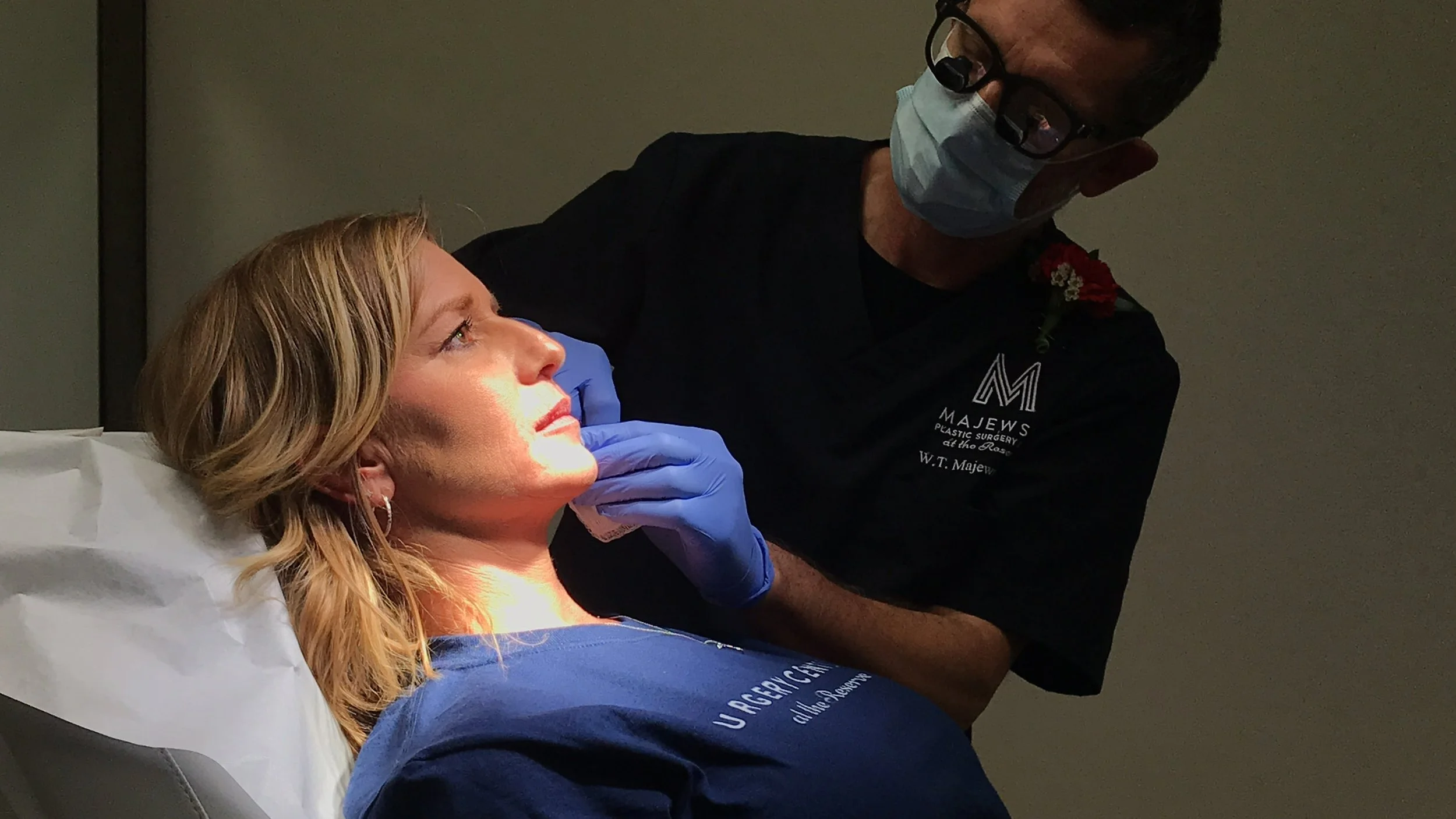Crow’s feet. Heavy eyes. Dark circles. Puffiness. While it might be tempting to point out the various signs of aging around the eyes, let’s remember to give ourselves a little break! Because the skin around the eyes is delicate and thin, it’s true that it becomes more susceptible to damage from the sun and the fine lines, wrinkles and pigmentation that come along with aging.
No matter, there are ways to help. Whether you want to improve the appearance of fine lines or address dark circles and under eye hollows, here are some at-home and in-office solutions to make your eyes look more energetic and restored.
At-Home Treatments
Under eye creams and serums can help improve the look of crow’s feet and dark circles by plumping and brightening the skin. For Majewski Plastic Surgery and Spa aesthetician Virginia McIntosh, the Skin Medica TNS Recovery Complex is a non-negotiable in her skincare routine—she uses the growth factor serum year round. “It forces your skin to turn on its own healing mechanisms to get rid of lines. I’ve never used anything better for my crows feet,” she says. You can also use it all over your face, including under the eyes.
Another under eye must: SkinCeuticals' A.G.E. Eye Complex. This treatment tackles both under eye darkness and fine lines around the eyes and offers both instant and long-lasting anti-aging benefits. “Optical diffusers” reduce the appearance of dark circles and capillaries while natural flavanoids and peptides work to dramatically improve puffiness over time. (Both products are available in our office. Give us a call to place your order!)
Dermal Fillers Under the Eyes
When even the strongest under eye creams and brightening serums aren’t cutting it, ask Dr. Majewski if under eye filler (often called tear-trough filler) is right for you. Primarily made from a modified version of hyaluronic acid (found naturally in the skin), dermal fillers are injected under the skin to plump cheek hollows, lips, deep facial wrinkles, or in this case, under eye hollows.
You’ll want to first determine if your under eye dark circles are a result of hyperpigmentation (fillers won’t help this) or a loss of volume (fillers can help this!). If you’d like to restore volume, fill out the hollowness or help diffuse the dark shadows under your eyes, dermal fillers can be an incredibly effective option. But remember: The area under your eyes is incredibly delicate, which means choosing a reputable doctor to administer under eye filler is imperative. Depending on the area treated and amount injected, fillers can last between 6-9 months.
Injectable Wrinkle Reducer for Crow’s Feet
Considered “dynamic wrinkles” (they happen when you’re making an expression or moving your face), fine lines and crow’s feet around the eyes can both contribute to the appearance of aging and fatigue, even when you feel at your youngest and best!
Temporary injectable wrinkle reducers like Botox and Dysport can work to combat this. Typically used on the top third of the face, wrinkle reducers temporarily smooth the appearance of lines by weakening or limiting the contraction of muscles—in this case, the lines that grow from the outer corners of your eyes. The treatment itself only takes a few minutes, with results lasting an average of 3-4 months.
If tired-looking eyes and fine lines are frustrating you, schedule a consultation with Dr. Majewski to learn more about the injectable process and whether dermal fillers or wrinkle reducers are right for you!















